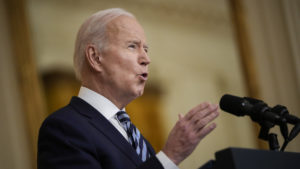Telstra and Woolworths are leading a fresh charge towards wind power. But is it all just hot air?

Pic: Thana Prasongsin / Moment via Getty Images
Two of Australia’s biggest corporations have provided major backing to new wind farms in New South Wales, with Telstra and Woolworths speeding their transition to renewable power.
Telstra (ASX:TLS) on Friday announced it would purchase 80 per cent of the generating capacity of the Crookwell 3 wind farm under development by Global Power Generation – a business 75 per cent owned by Spanish renewable energy company Naturgy and quarter owned by Kuwait’s sovereign wealth fund.
The telco will take power from the Goulburn, NSW, wind farm from mid-2023, claiming it will take it halfway to its goal of running its operations with 100% renewable energy by 2025.
Crookwell 3 will add to Telstra’s investments in the Murra Warra Wind Farm and Emerald Solar Farm, bringing 58MW of capacity into the local electricity grid.
Or as Telstra CEO Andrew Penn curiously put it, “enough to power every home in Launceston, Tasmania for a whole year”, which is a strange comparison given Tasmania is almost entirely powered by renewables in the form of hydro and wind power already.
Woolworths meanwhile says 30% of its New South Wales operations will be backed by renewable energy after securing a landmark power purchase agreement with the PostScriptum Ventures owned CWP Renewables, developers of the Bango wind farm.
With so much investment going into wind and solar in Australia – despite concerns about a less than sincere level of support from the Morrison Government and energy minister Angus Taylor – just where is the market headed?
Corporate investment in renewables a sign of the times
Given the growing wave of shareholder activism against multinational corporations viewed as major polluters, it is only logical some of Australia’s biggest firms are investing in wind and solar to beef up their green credentials.
Jai Mirchandani, the founder and portfolio manager of Melbourne focused sustainable investment firm ELM Responsible Investments, which he says has had about 10 per cent of its portfolio invested in renewables since launching a couple years ago.
He said major corporations are buying into renewables at a faster rate around the world.
“I think that’s a global trend as well where big companies are going to be going direct to renewable energy sources,” he said.
“It’s the right thing to do and there’s a lot of pressure from shareholders as well, so I think we’ll see more of that.
“As technology improves in the energy storage space we’ll probably see more and more of these types of deals.
“That’s constantly improving and I think as the cost comes down that becomes less of an issue.”
Technology is improving in the wind power space as well, with General Electric researchers recently unveiling plans to develop a floating 12MW offshore turbine that can be moored in waters greater than 60m in depth.
The development would greatly expand the potential to develop offshore wind farms at scale, almost doubling the current US capacity of 4000 terawatt hours.
While Australia is yet to host an operating offshore wind farm, a number have been proposed including the 2000mw Star of the South project in Victoria, which could service up to one-fifth of the State’s household energy needs.
Investment in wind, solar and hydro is being seen at an increasing rate in the mining industry, which regularly falls under scrutiny for being a major source of Australia and world’s carbon emissions.
Agrimin (ASX: AMN) announced plans this week to incorporate wind into the Mackay SoP project in WA, which once operating will be the largest potash development in Australia.
Meanwhile Andrew Forrest has led Fortescue Metals Group (ASX:FMG) and its new future industries arm on a merry Covid-be-damned tour of the world before announcing in the AFR a sort-of deal to develop the Democratic Republic of the Congo’s biggest hydro power project.
It dialled back its rhetoric shortly after in an ASX announcement clarifying the article, saying no binding agreement had been made with the DRC Government.
Asset sales highlight investment in renewables market
Renewables are up to their highest ever share of the national electricity market, climbing to 28 per cent of the Australian grid in the first quarter of this year.
The growth of large scale solar PV actually saw solar generation overtake wind in 2020 as the largest source of renewable grid power, although there is a substantial development pipeline for both major renewable energy sources.
That is being aided by the rising cost competitiveness of battery storage as Australia’s coal generation fleet ages and a number of plants, like AGL’s Liddell, move toward retirement.
A number of newly operating or late-stage development solar and wind farms, and often entire portfolios, are coming onto the market with international funds, energy companies and private equity among buyers and sellers of the operations.
Tilt Renewables (ASX:TLT) was the biggest, with the Australian and Kiwi wind power generator trading its New Zealand business to Mercury NZ (ASX:MCY) and its Australian business to AGL Energy (ASX:AGL) backed PowAR for cash consideration of around $2.7 billion (a tick under $NZ3b).
New Energy Solar (ASX:NEW) also sold its Australian solar farms at Beryl and Manildra to Thai coal miner Banpu Energy to focus on its growing American business, while PE firms Denham Capital and Elliott Management and London-listed John Laing Group have run sales processes.
Last year Spain’s Iberdrola took over ASX-listed Infigen Energy and NZ-based Meridian Energy (ASX:MEZ) is considering parting with its Australian power generation and retail businesses.
Buyer interest driving corporate activity
Mirchandani said the sales are not likely to have been driven by operators or developers desperate to exit the market.
He said they were most likely driven by the desire of large investors to secure new assets that can generate returns as well as grab a foothold in the environmentally-conscious renewables space.
“There’s been some grid issues here in Victoria especially and so yes there are some teething issues locally as we transition to renewable energy and there needs to be much more investment at the grid level as well,” he said.
“I think primarily the acquisitions of these assets are driven by low interest rates forcing investors to look for yield and these developed assets do generate yield, especially when you have the purchase agreements in place.
“There’s also the pressure or willingness for a lot of institutions to own renewable energy assets, so it ticks those two boxes.”
“If we look at Tilt Renewables, which is the big transaction recently, the grid issue was there, but it was taken over at a huge premium.
“I think it’s that lower yield driving investors to look for stable, long duration assets and also the fact that these are favoured assets given the environmental benefits.”
The recent hive of corporate activity has seen a thinning out of Australian listed companies operating solar and wind farms locally.
Spark Infrastructure (ASX:SKI) owns the Bomen Solar Farm in New South Wales, but as of its last annual report renewables accounted for just 3 per cent of its business, which is largely driven by distribution networks in SA and Victoria.
Mirchandani said some of the assets bought or developed by private equity firms and funds could eventually be repackaged and listed on the bourse at a later date as utilities.
Related Topics
UNLOCK INSIGHTS
Discover the untold stories of emerging ASX stocks.
Daily news and expert analysis, it's free to subscribe.
By proceeding, you confirm you understand that we handle personal information in accordance with our Privacy Policy.








